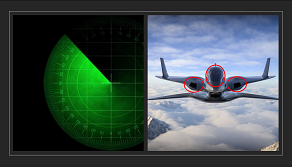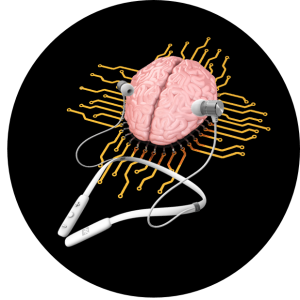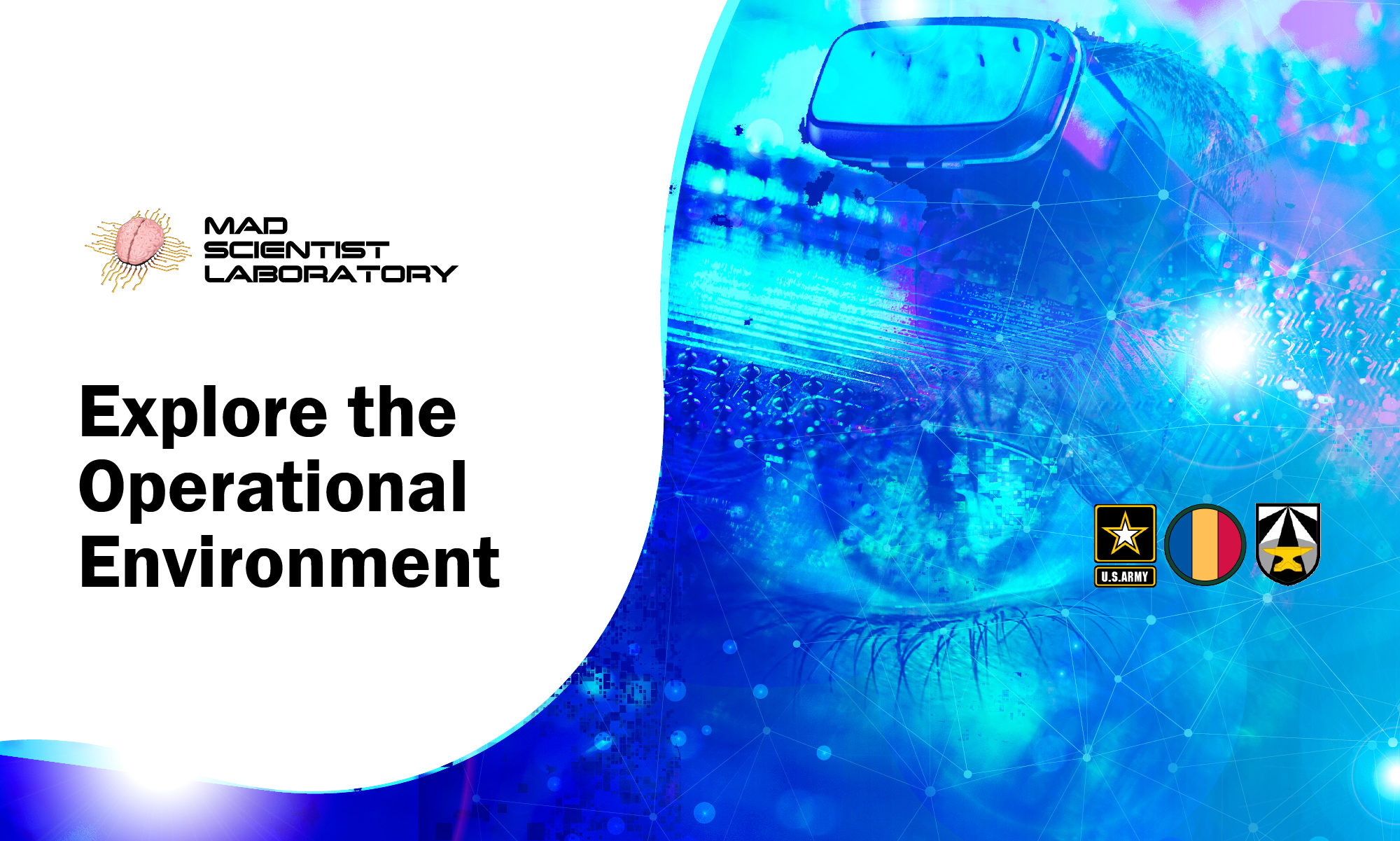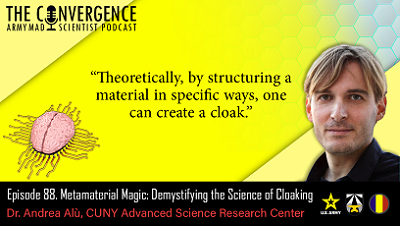“Theoretically, by structuring a material in specific ways, one can create a cloak.”
[Editor’s Note: As we reported earlier this month, “The Operational Environment is increasingly lethal with the ubiquity of sensors and proliferation of battlefield automation facilitating effective precision and massed strike capabilities. Forces that can be sensed are targeted, and if targeted, are destroyed or rendered inoperable.” This increasingly transparent battlespace has been wrought by the democratization and convergence of commercial satellite imagery, inexpensive Unmanned Aerial System (UAS)-borne sensing platforms, and the Internet of Everything and Everyone. The resulting web of networked sensors could usher in the end of covert movement for combat units and their associated command and control and logistical support nodes, and with that spell the demise of strategic and operational deception and surprise.
This battlespace transparency is driving a renewed quest for concealment. In today’s episode of The Convergence podcast, we sit down with Dr. Andrea Alù to discuss the reality of invisibility, the science behind metamaterials, and the associated possibilities for the U.S. Army.
[If the podcast dashboard is not rendering correctly for you, please click here to listen to the podcast.]
 Andrea Alù is a Distinguished Professor, founding director of the Photonics Initiative at the CUNY Advanced Science Research Center, Einstein Professor of Physics at the CUNY Graduate Center, and Professor of Electrical Engineering at The City College of New York. He is affiliated with the Wireless Networking and Communications Group and the Applied Research Laboratories, both based at the University of Texas at Austin, where he is a Senior Research Scientist and Adjunct Professor. His research interests span a broad range of technical areas, including applied electromagnetics, nano-optics and nanophotonics, microwave, THz, infrared, optical and acoustic metamaterials and metasurfaces, plasmonics, nonlinearities and nonreciprocity, cloaking and scattering, acoustics, optical nanocircuits and nanoantennas.
Andrea Alù is a Distinguished Professor, founding director of the Photonics Initiative at the CUNY Advanced Science Research Center, Einstein Professor of Physics at the CUNY Graduate Center, and Professor of Electrical Engineering at The City College of New York. He is affiliated with the Wireless Networking and Communications Group and the Applied Research Laboratories, both based at the University of Texas at Austin, where he is a Senior Research Scientist and Adjunct Professor. His research interests span a broad range of technical areas, including applied electromagnetics, nano-optics and nanophotonics, microwave, THz, infrared, optical and acoustic metamaterials and metasurfaces, plasmonics, nonlinearities and nonreciprocity, cloaking and scattering, acoustics, optical nanocircuits and nanoantennas.
Army Mad Scientist sat down with Dr. Alù to discuss the reality of invisibility, the science behind metamaterials, and the associated possibilities for the U.S. Army. The following bullet points highlight key insights from our conversation:
-
-
- Dr. Alù’s work focuses on wave physics, specifically looking at how to structure materials at the nanoscale to change their interactions
 with waves – light, sound, and radio – and demonstrate phenomena that would not be possible otherwise, for example invisibility. These new structured materials are called metamaterials because their properties go beyond those of natural materials.
with waves – light, sound, and radio – and demonstrate phenomena that would not be possible otherwise, for example invisibility. These new structured materials are called metamaterials because their properties go beyond those of natural materials.
- Dr. Alù’s work focuses on wave physics, specifically looking at how to structure materials at the nanoscale to change their interactions
-
-
-
-

Left: Cross section of an infinitely long PEC cylinder, subject to a plane wave. The scattered fields can be observed. Right: A 2-dimensional cloak, designed using transformation optics techniques is used to cloak the cylinder. There is no scattering in this case and the cylinder is electromagnetically invisible / Source: Image by Physicsch, via Wikimedia Commons and Creative Commons Attribution-Share Alike 3.0 United States By structuring materials in specific ways, a “cloak” can be created and, when wrapped around an object, can suppress the scattering of light or waves which is what allows the object to be visible. This process causes a transparency effect on the object, effectively causing it to disappear.
-
-
-
-
- There is a limit, however, to making an object fully transparent when using passive materials which require no energy. There is a tradeoff between the size of the object and the amount of suppression of scattering waves from the object –- the larger the object, the harder it is to achieve full suppression of the scattering waves.
-
-
-
- Invisibility may be traditionally thought of as an object not being visible to the human eye, though other waves can be cloaked as well. Cloaking
 radio waves can make an object electro-magnetically disappear. For example, an aircraft’s electromagnetic footprint is dominated by only a few parts and reducing the signature of those parts would make the aircraft effectively transparent to most sensors.
radio waves can make an object electro-magnetically disappear. For example, an aircraft’s electromagnetic footprint is dominated by only a few parts and reducing the signature of those parts would make the aircraft effectively transparent to most sensors.
- Invisibility may be traditionally thought of as an object not being visible to the human eye, though other waves can be cloaked as well. Cloaking
-
-
-
- The ideal result of a cloaked object is that it is truly not detectable in any frequency range — however Dr. Alù’s team has proven that there are fundamental limits to cloaking frequencies — there is no way to cloak an object from all frequencies. It is possible to cloak an object (such as an aircraft) from conventional radar frequency, but this in turn creates a larger signature at other frequencies.
-
-
-
- The On-going Concealment Challenge: The Internet of Everything and Everyone is increasing transparency and granularity across the modern

Source: Image from Army Technology battlespace, transforming everyone and everything into potential sensors. The convergence of inexpensive commercial technologies has further democratized battlefield transparency, as commercial satellite imagery, urban CCTVs, and the proliferation of small Unmanned Aerial Systems (sUAS) provide multiple corroborating views. The quest for concealment will spur continued development of sensor countermeasures in the enduring competition for battlefield advantage.
- The On-going Concealment Challenge: The Internet of Everything and Everyone is increasing transparency and granularity across the modern
-

Stay tuned to the Mad Scientist Laboratory for our next episode of The Convergence podcast on 14 December 2023!
If you enjoyed reading this post, please also see our discussions regarding Concealment in the Fundamental Questions Affecting Army Modernization and Finders vs Hiders in Timeless Competitions…
… as well as the following related content:
Nowhere to Hide: Information Exploitation and Sanitization
War Laid Bare and Decision in the 21st Century, by Matthew Ader
Warfare in the Parallel Cambrian Age by Chris O’Connor
Integrated Sensors: The Critical Element in Future Complex Environment Warfare, by Dr. Richard Nabors
The Operational Environment’s Increased Lethality
Democratized Intelligence, by Kate Kilgore
Death From Above! The Evolution of sUAS Technology and associated podcast, with COL Bill Edwards (USA-Ret.)
Unmanned Capabilities in Today’s Battlespace
Top Attack: Lessons Learned from the Second Nagorno-Karabakh War and its associated podcast, as well as Sooner Than We Think: Command Post Survivability and Future Threats and its associated podcast, both with COL John Antal (USA-Ret.)
Insights from Ukraine on the Operational Environment and the Changing Character of Warfare
Disclaimer: The views expressed in this blog post do not necessarily reflect those of the U.S. Department of Defense, Department of the Army, Army Futures Command (AFC), or Training and Doctrine Command (TRADOC).




Too late, its already here: https://www.vice.com/en/article/88q3gk/chinese-students-invent-invisibility-cloak